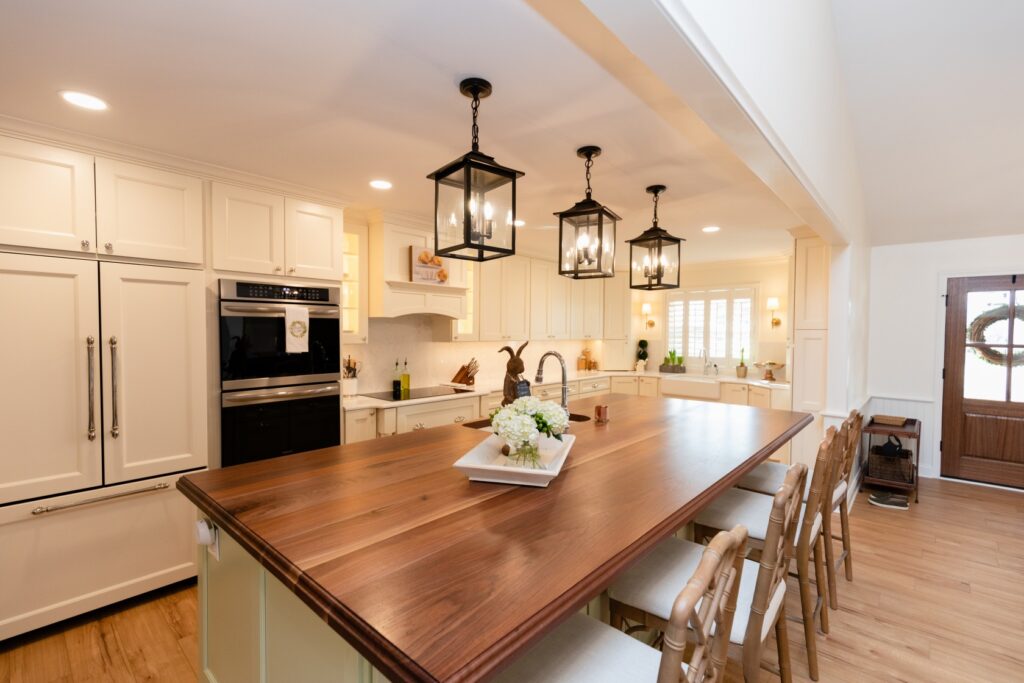Countertop Guide–Selecting The Right Material For The Way You Live
There are multiple countertop solutions available, but do you know the differences between all of them? The pros and cons? Will the material you select work for the way you live from day to day? In this blog, we will share the most commonly used materials in countertops today, so you can make the best decision for your remodel or new construction home!
Quartz
PROS:
- Low maintenance
- Doesn’t require a sealant
- Finish options: Leathered, Honed, or Polished
- Wide variety of color options
- Non-porous
CONS:
- Heat sensitive
- Susceptible to scratches
- Direct sunlight can fade the color
Note: Quartz is a man-made material consisting of resin and quartz.


Granite
PROS:
- Heat resistant
- Durable; Great for daily use
- Unique look
- Natural material
CONS:
- Requires maintenance (low)
- Requires regular sealant
Note: Granite is a natural stone.

Quartzite
PROS:
- Durable
- Similar to marble, but is much harder and less porous.
- Offers a unique natural look that is hard to mimic with other materials.
CONS:
- Requires regular sealing
- Higher fabrication and installation cost due to the hardness of the material
- Not as many color options
Note: Quartzite is a natural stone.

Concrete
PROS:
- Customizable
- Hard-wearing material
- Heat resistant
- Scratch resistant
CONS:
- Prone to staining
- Shows wear (Some people like the look of patina on materials because it adds charm/character to a space, but if you are wanting a polished, modern look, this is probably not the way to go!)
- Porous, so must be sealed regularly.

Soapstone
PROS:
- Heatproof
- Naturally stain resistant
- Naturally antimicrobial
- No sealant needed
- Has similar veining to marble, but comes in darker tones.
- Unique veining
- Patinas over time (Some may see this as a con!)
CONS:
- Softer material (compared to other natural stones)
- More susceptible to scratches, dents, chips, etc.
- Patinas over time (Some may see this as a pro!)
- Requires mineral oil treatment
Note: Soapstone is a natural stone.

Marble
PROS:
- Durable
- Heat resistant
- Natural grain is stunning
- Stands the test of time (durability and style)
CONS:
- Needs to be sealed
- Scratches and dents easily because it is so soft
- Can be damaged by common acids such as: coffee, citrus, wine, etc.
- Expensive
Note: Marble is a natural stone.

Butcherblock
PROS:
- Affordable
- Long-lasting
- Many styles and species available
- Adds warmth and character to a space
CONS:
- Requires regular upkeep
- Prone to water stains and scratches, but can be sanded and repaired.
- Shows wear (Some people like the look of patina on materials because it adds charm/character to a space, but if you are wanting a polished, modern look, this is probably not the way to go!)
- Vulnerable to bacteria due to the porous material


Finishes
Polished
- Glossy, reflective finish
- Smooth touch
- Easiest to maintain
- Helps protect the stone against staining and scratches
- Most common finish

Honed
- Matte finish
- Smooth touch
- Looks more like a natural rock
- More prone to staining

Leathered
- Brushed finish
- Not as porous as Honed, but more porous than Polished.
- Rougher/irregular touch
- Subtle, dimpled texture
- Rustic aesthetic
- Requires more maintenance to prevent bacteria from building up in the imperfections

Profiles
Just when you thought you were finished with decisions, the edge profile needs to be selected!
A couple of things to consider when selecting:
- Budget: More intricate profile edges, often mean more $$$.
- Cleaning: The more details, the harder it is to clean.
- Style: Which profile complements your style? The more ornate options, tend to be better suited with a traditional aesthetic.
If you’re interested in viewing the options, they can easily be found online or you can go to your local fabricator or showroom to see them in person!
MSI also has a great tool to preview the top profile edges. Check it out here.
Join The List
All things pretty sent directly to your inbox.